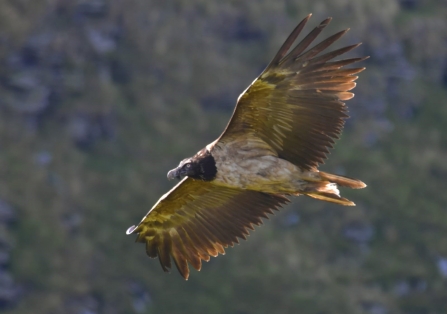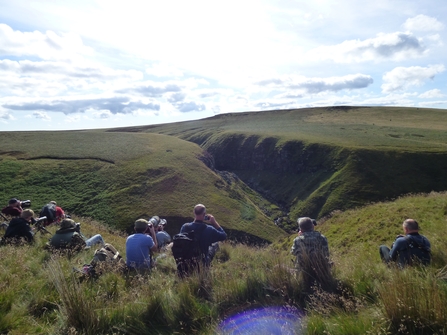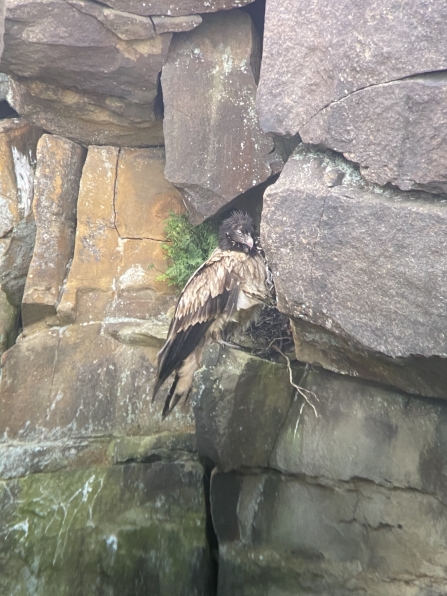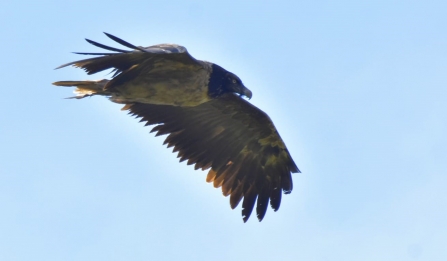The last few days will live me forever.
To get up so close to such a magnificent bird and have it circling close over your heads was something I never expected to see when I had got reports from a friend that a very large bird of prey had been seen over the moors above Chatsworth. That night I went out on a fruitless drive around that area with my eldest son but the trail was cold! Then the following day I heard it had been seen flying along a ridge in the Upper Derwent Valley. That evening we scanned all the hills around the Ladybower reservoir and still no sign of the Vulture. Then we spoke to another birdwatcher who told me he had learnt it had been seen on remote moorland above the reservoirs. We drove to where the last sighting had been made and lots of other birdwatchers were already walking up a steep moorland track. Clearly we were getting closer to one of the rarest, largest birds ever to visit the UK – only the second time in fact this bird has turned up in Britain. But we were running out of daylight and the hike in to the last known sighting was still nearly 2 hours away! We managed to hit the ridge as the sun was setting and in the distance on a remote hillside we could see a small group of birdwatchers with their telescopes clearly focussing on the elusive Bearded Vulture. It had settled for the night in a narrow clough with rocky ledges. I was in luck but it would mean a predawn start the next day to have any chance of seeing the bird.
The following morning under a brilliantly clear starry sky I started the ascent up on the moorland and over the boggy plateau to where the bird was roosting. I was joined by dozens of other people excited to have a once in a lifetime opportunity to see such an incredibly bird right here in the Peak District. As the sun was rising, and after yomping over rough terrain and bogs I arrived opposite the Bearded Vulture. Other birdwatchers were already there. The bird was snoozing and totally oblivious to the dozens of people watching it from across the valley at a very safe distance. Every now and again it would open its eyes and preen one of its feathers. After nearly 3 hours it finally got serious about moving. After flapping its wings it flew down onto the floor of the clough onto a large flat rock and soaked up the rays of the early morning sun. Then it lifted off. As it spiralled out of the clough it circled our group several times and came within 40 feet of us. And then it disappeared over the hill. We were all in shock and elated at the same time at what we had just witnessed. Some people just shouted with joy. That’s the power of nature. The most incredible connection with one of the most incredible birds on the planet – the Bearded Vulture or the Bone Breaker!




